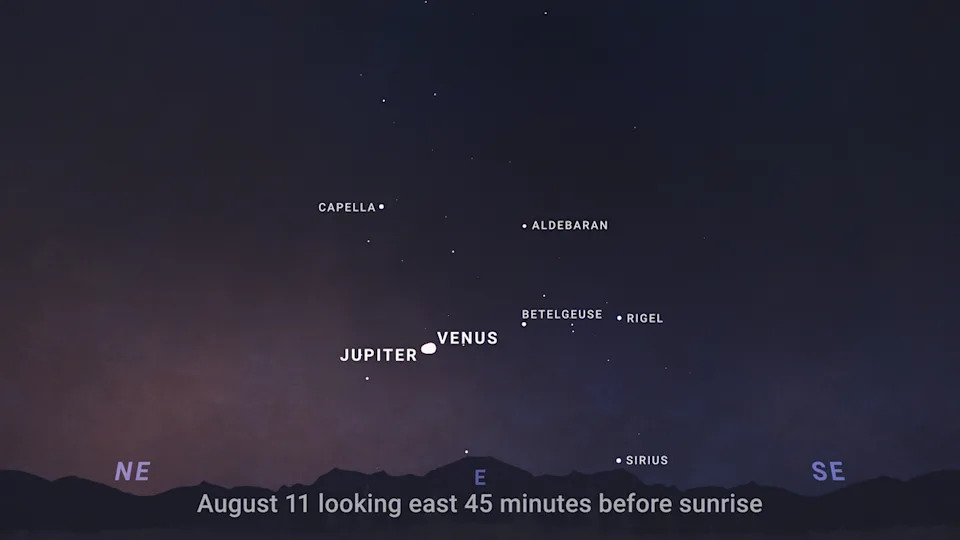Celestial Spectacle Awaits Californians: Planets Align with Meteor Shower Peak

August offers a remarkable astronomical opportunity for residents of California, combining the striking proximity of two planets – Jupiter and Venus – with the annual Perseid meteor shower. NASA reports that these celestial bodies will appear unusually close in the eastern sky throughout August, gradually approaching each other until they achieve their closest alignment on August 11th and 12th. The visual effect will be compelling; although separated by millions of miles, the planets will seem to “graze” one another from Earth’s perspective.
The Perseid meteor shower, known for its brilliance, is anticipated to reach its zenith around the same period, spanning activity through August 23rd. This confluence of events provides a unique chance to observe multiple elements of our solar system in close succession. Planetary conjunctions, such as this Jupiter-Venus pairing, occur when planets’ orbital paths bring them into apparent closeness on the same side of the sun, an effect amplified by Earth’s vantage point, according to The Planetary Society.
While astronomical instruments can enhance the viewing experience, no specialized equipment is required to discern Venus and Jupiter, which are among the brightest objects in our solar system after the sun and moon. Observers should seek locations with unobstructed eastern horizons and consult weather forecasts for clear skies.
However, this year’s Perseid peak coincides with a nearly full moon – occurring on August 9th– which will significantly impact visibility. The American Meteor Society estimates that the waning gibbous phase of the moon will diminish meteor activity by at least 75%, primarily obscuring fainter meteors. NASA suggests optimal viewing during the pre-dawn hours, though occasional glimpses may be possible as early as 10 p.m.
To ascertain sky conditions across California, residents can utilize the National Weather Service’s graphical forecast tools. These resources offer detailed hourly information on cloud cover, fog, smoke, and haze, facilitating informed decisions about viewing locations.









